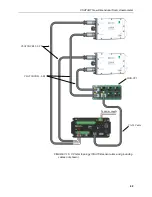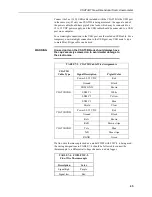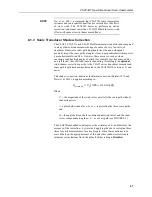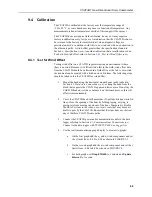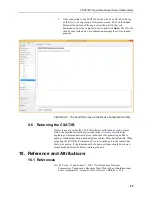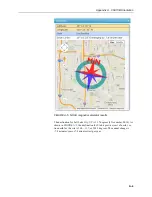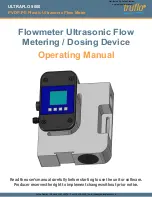
CSAT3B Three-Dimensional Sonic Anemometer
55
also indicates the preferred settings for flux measurements and spectral
analysis. As discussed previously, for spectral analysis, the bandwidth should
be selected as half the output rate. For flux applications, the output rate or
sampling frequency need not be greater than 10 or 20 Hz in order to reduce
unwieldy data sets, and the bandwidth may be left fairly wide open (for
example, 20 Hz) to ensure high frequency fluxes are retained in the signal.
TABLE 8-4. Measurement Lags (
N
lag
)
for Analog Measurements or
Measurements with No Delay
Mode
Measurement Lag (in output samples), N
lag
0
1/
1 data logger scan
2
Unprompted output rate/100 (lag in seconds)
1 and 3
Output rate (f
scan
)
10 Hz
20 Hz
50 Hz
100 Hz
Ba
ndw
idt
h
(B
W)
5 Hz
8
2/
16
40
80
10 Hz
4
8
3/
20
40
20 Hz
2
3/
4
3/
10
20
25 Hz
-
-
8
3
16
1/
Best for flux applications
2/
Recommended for spectral analysis
3/
Good for flux applications
𝑁𝑁
𝑙𝑙𝑙𝑙𝑙𝑙
=
𝑓𝑓
𝑠𝑠𝑠𝑠𝑙𝑙𝑠𝑠
𝐵𝐵𝐵𝐵
× 4
8.4 Data Logger Programming using SDM or CPI
The
CSAT3B() CRBasic
instructions control and retrieve data from the
CSAT3B. These instructions are available on the CR6, CR800/850, CR1000X,
and CR3000 data loggers.
The following sections give specifics about CRBasic instructions. Examples of
common CRBasic programs for the CSAT3B are shown in Appendix
(p. C-1)
8.4.1 CRBasic Instructions
8.4.1.1 CSAT3B()
The
CSAT3B()
instruction is the primary instruction used to retrieve
anemometer data from the CSAT3B. This will set the operating mode of the
anemometer and retrieve the wind, sonic temperature, and diagnostic
information. The instruction requires four parameters which are further
described in the following sections:
•
Destination
•
Bus
•
Address
•
OperatingMode


